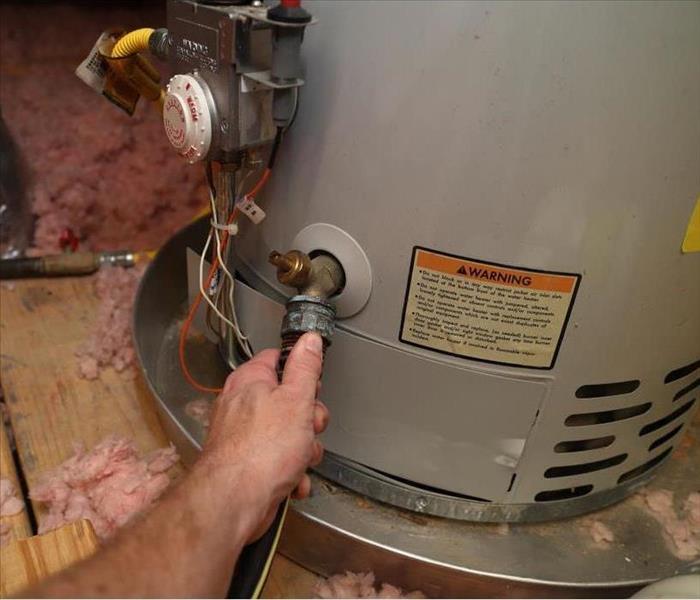How To Flush a Water Heater?
11/15/2022 (Permalink)
How Should a Water Heater Be Flushed?
If you've ever come home and found your water heater leaking, it's likely because something went wrong with the tank. Water heaters are designed to last for years, but they're not immune to problems. A clogged drain line can cause a tank to overflow or leak into your basement. If there's sediment buildup in either the tank or piping (or both), those components will eventually stop working properly due to rusting and mineral deposits that cause corrosion. How do you flush out all that crud? Follow these steps:
Turn off the water and power
Whether you're an experienced DIYer or hiring a professional, it's important to turn off the water and power to your water heater before beginning any work. If you don't know how to do this, enlisting the help of someone who does is always a good idea.
Drain the water heater
If you've never done this before, it can be a little intimidating. But it's actually pretty easy to drain the water heater. All you have to do is find the drain valve (it'll be on the bottom of your water heater) and use a hose to drain out all of that old water.
Attach a hose to the drain valve
Once you've found the drain valve, attach a hose to it using a garden hose. Make sure that the other end of the hose goes somewhere safe: either outside or down a hole where it won't get clogged with dirt.
Open the drain valve
Flushing a water heater is much like flushing any other plumbing fixture in that you need to open the drain valve and then use some sort of hose or faucet to drain the tank. That said, some water heaters don't have a drain valve, so it's important to know how your system works ahead of time. This will effectively flush out most remaining sediment particles.
- Use a plunger
- Remove the fill cap and pour water into the tank until it's full again
Close the drain valve and refill the tank
Make sure to close the drain valve before turning on the power and water again. If you don't close it, your water heater will not be able to refill. Once the water is on, your heater will begin to refill with water. This process can take hours, so be patient!
How often should I flush my water heater?
Flushing your water heater is a simple procedure that you can perform yourself. It's important to flush your water heater regularly, as the buildup of rust and sediment can lead to breakdowns and prevent it from working properly.
The frequency with which you should flush your hot water tank depends on many factors, such as how much sediment is present in your water supply, what kind of filters are installed on the tank (if any), and how old/new the unit is. As a general rule: if you have hard water that hasn't been treated yet or if there are no filters installed on your hot-water tank then flushing should be done every 6 months; otherwise, flushing should be done once per year.
Hopefully, this article has helped you understand how to flush your water heater. If you're still unsure about what to do with your tank, contact a professional plumber. They'll know exactly how much water you need to drain and will have all the necessary tools for cleaning and flushing.



 24/7 Emergency Service
24/7 Emergency Service
